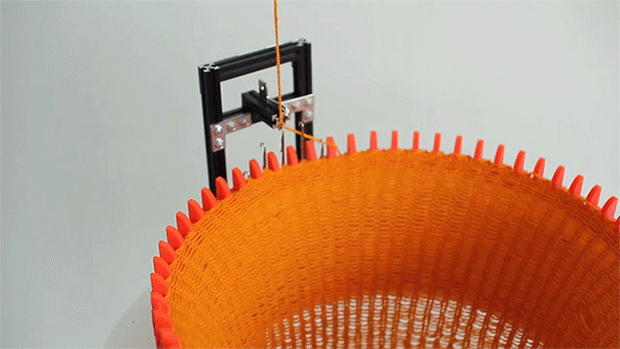

Knitting is a popular needlecraft, but it can get tiring knitting larger pieces. Varvara Guljajeva and Mar Canet came up with a clever way to automate the process with this open source, open design, 3D printed circular knitting machine called the Circular Knitic. This idea didn’t just come out of thin air, it took a few years and different models to get to the finished machine you see above.
Guljajeva and Canet have been creating art together since 2009, and they first started working with knitting machines in 2012 when they began work on their first: the Knitic. After finishing this project, they decided to take it to the next level and came up with the Circular Knitic.

Their new circular knitting machine is made from3D printed pieces,laser cut plexi,wood, and various electronic components. Since they used digital fabrication when designing and making this machine, they have been able to easily replicate this machine over and over again.
You can find the full list of parts and directions for making this automatic knitting machine on Instructables. Once you have it together, it’s time to start knitting! Just like knitting done by hand, you need to start by casting on the first stitches. When the yarn is oriented right on the hooks, it’s time to put on the weights. If weights aren’t added, the piece will be too light and the hooks may not move the way they need to.
The machine is then turned on and it seems like magic, but what it is doing is. actually, pretty basic. The yarn starts on a series of latch hooks which are hooked needles that have, what appears to be, a little metal flap that can flip up and down to cover the hook of the needle. These are commonly used with latch hook projects (hence the name).
The hooks on the machine are pushed up as the threading part goes around in a circle. When the hook goes up, it grabs the yarn and then the hooks go back down again. When the hook reaches the loop yarn that is already around it, the latch catches and flips closed over the hook. Now, when it goes through the yarn loop that is already on it, it will be able to slide that loop off while still holding onto the yarn in the hook. Then it can repeat this process when the threading part comes around again.
Make sure to check out the video below to see the machine in action.

ADVERTISEMENT












